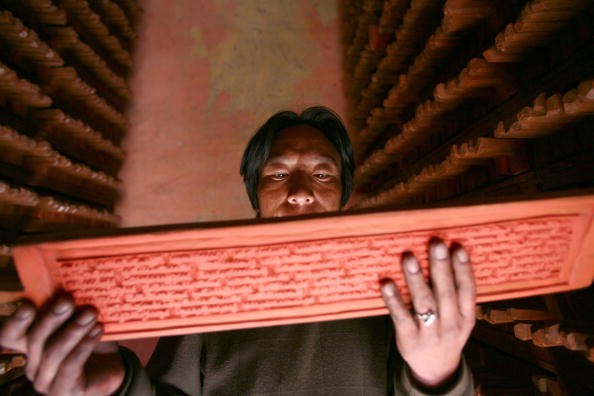One of the most important Buddhist institutions in the world of Tibetan Buddhists, the Parkhang printing lamasery uses ancient ways to preserve the Tibetan language and various Buddhist texts, the New York Times reported.
Located in Derge in the Kham region, the printing lamasery dates back to the early 16th century and continues to attract throngs of pilgrims to its hallowed halls.
Although it receives little to no support from the Chinese government in Tibetan-language education, the Parkhang printing lamasery has carried on in preserving ancient Buddhist texts and, as a result, Tibetan language as well.
The Parkhang printing lamasery is also home to an impressive collection of sutras. 830 classic scriptures are housed within the three-story monastery, along with copies of ancient Tibetan manuscripts from a wide range of Tibetan Buddhist schools, Pema Chujen, a volunteer, told the New York Times.
To make copies of the ancient texts, the printing lamasery has over 320,000 wooden printing blocks, some of which are over 260 years old. The printing lamasery has also been busy reproducing new blocks since the 1980s.
A single printing block is made from red birch wood. A total of 13 steps are undertaken, including soaking the raw pieces of wood in feces for approximately six months. According to Pema, the raw wood that survives during this period are then fashioned into printing blocks.
During the peak of its operations, the printing lamasery employed over 500 people, most of which are monks from Gonchen Monastery.
Nowadays, the Parkhang printing lamasery has about 60 people involved in its printing operations even though the pay is low, said Pema. Some of the laypeople have been with the printing lamasery for about twenty years, and every day the print thousands of pieces of sutras to be distributed in the Tibetan plateau.
Although times have definitely changed, the printing process at the lamasery has not changed.
“The operations of the printing press are today similar to what they were in 1985,” said Katia Buffetrille, a scholar of Tibet from the Ecole Pratique des Hautes Etudes in Paris.
“It’s amazing how many pages they print every day. That can explain the bad quality of the printing sometimes.”



























